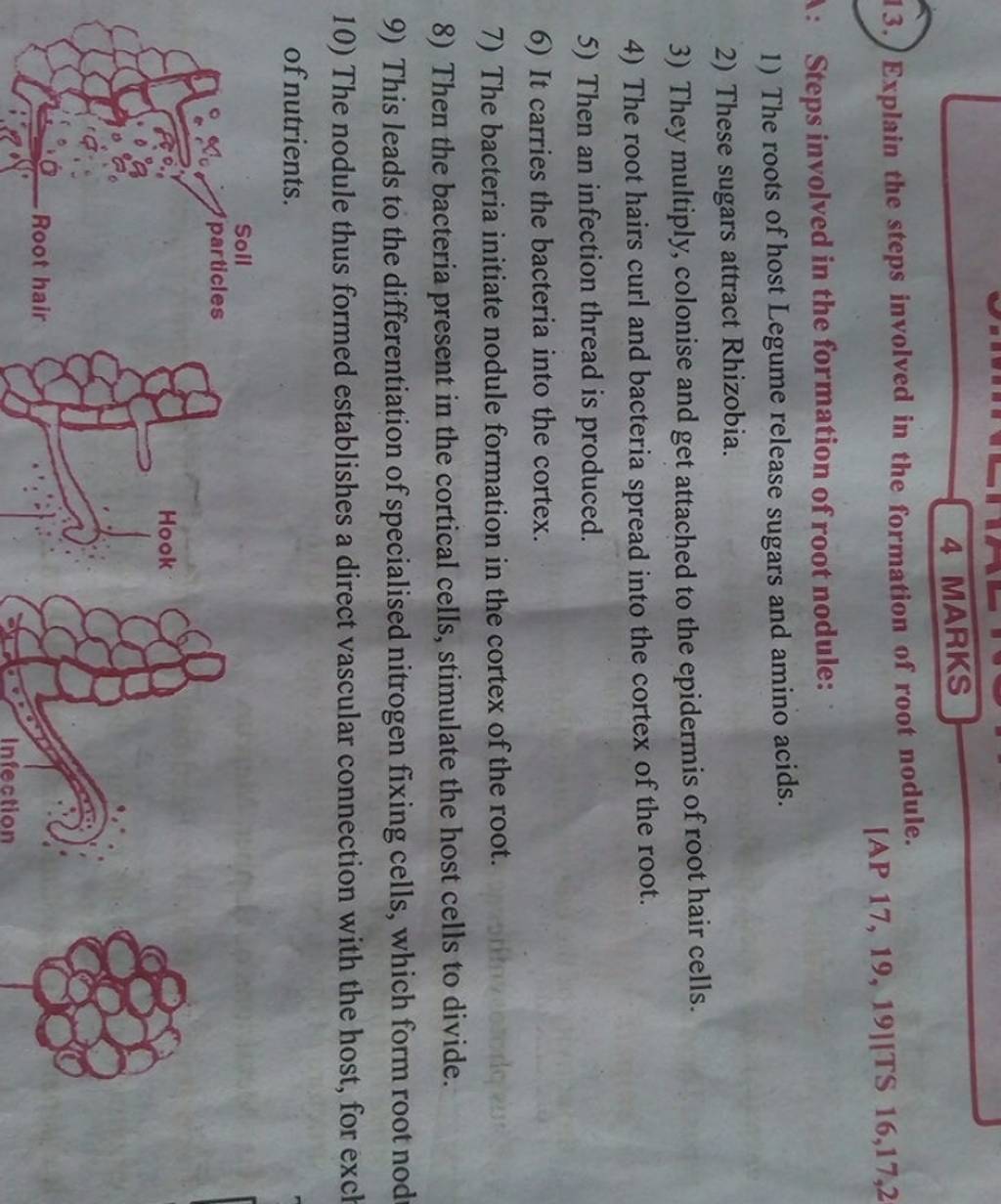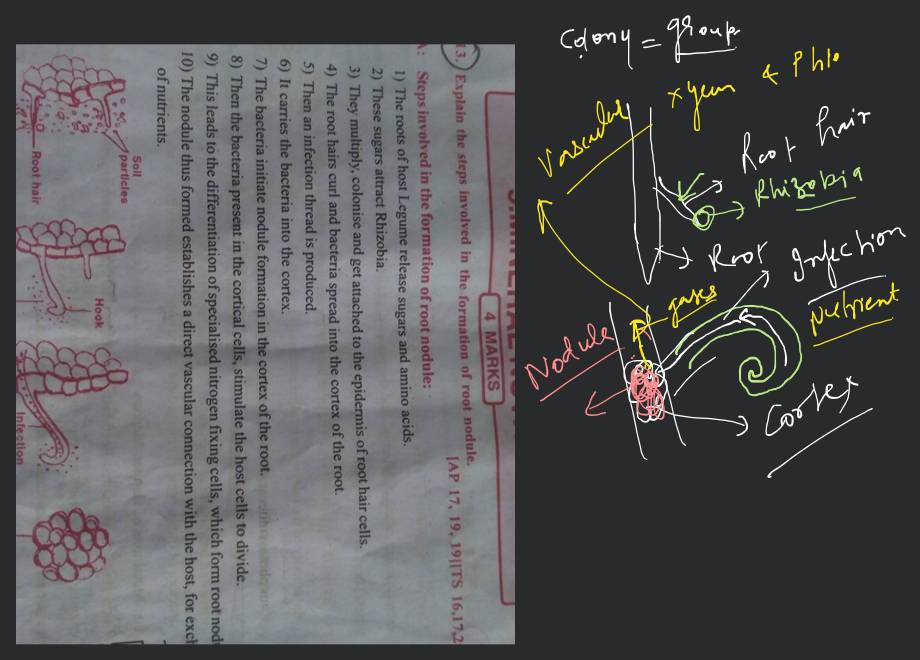Question
Question asked by Filo student

Explain the steps involved in the formation of root nodule. Steps involved in the formation of root nodule:
- The roots of host Legume release sugars and amino acids.
- These sugars attract Rhizobia.
- They multiply, colonise and get attached to the epidermis of root hair cells.
- The root hairs curl and bacteria spread into the cortex of the root.
- Then an infection thread is produced.
- It carries the bacteria into the cortex.
Found 8 tutors discussing this question
Discuss this question LIVE
13 mins ago

One destination to cover all your homework and assignment needs
Learn Practice Revision Succeed

Instant 1:1 help, 24x7
60, 000+ Expert tutors

Textbook solutions
Big idea maths, McGraw-Hill Education etc

Essay review
Get expert feedback on your essay

Schedule classes
High dosage tutoring from Dedicated 3 experts
Practice more questions on Biotechnology
Question 1
Medium
Views: 5,690
Question 4
Easy
Views: 5,939
Students who ask this question also asked
Question 1
Views: 5,865
Question 2
Views: 5,860
Question 3
Views: 5,405


Stuck on the question or explanation?
Connect with our Biology tutors online and get step by step solution of this question.
231 students are taking LIVE classes
| Question Text | Explain the steps involved in the formation of root nodule. Steps involved in the formation of root nodule: |
| Updated On | Mar 13, 2023 |
| Topic | Biotechnology |
| Subject | Biology |
| Class | Class 12 |
| Answer Type | Video solution: 1 |
| Upvotes | 110 |
| Avg. Video Duration | 6 min |




